Alpine edelweiss: the best varieties and tips for growing

Alpine edelweiss belongs to the herbaceous plants of the Astrov family. In natural nature, the flower lives in the highlands, slopes and rocks of mountains at a sufficient height above sea level. Against the background of sparse rocky vegetation, it looks especially impressive.

Description and characteristics
Edelweiss or leontopodium (which means "lion's foot" in translation) can grow on poor rocky soils and in hard-to-reach places between rocks and on high cornices. The plant can have different parameters, but most often they reach 20-25 cm, both in height and in width. The stems of the flower have a slightly curved shape, they can sometimes branch out in the upper part, forming squat bushes. Lanceolate plates form a basal rosette. The inflorescences consist of several baskets placed together, around which are placed elongated leaves in the form of a star or paw.
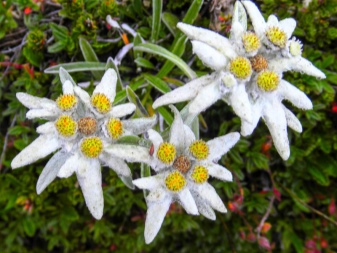
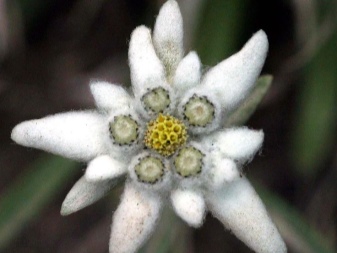
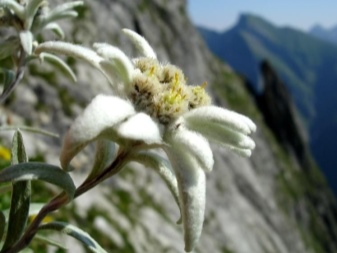

The baskets are painted in gray-yellow tones, the rest of the petals are snow-white. The inflorescences, like the whole plant, are densely covered with soft villi, which gives it a silvery tint. Such a covering in natural conditions serves as a kind of protection from the cold climatic conditions of the mountains. Flowering occurs in late spring or summer, after which the seeds ripen with tiny flying seeds. The roots of the plant are creeping, which is why it is able to grow on its own.

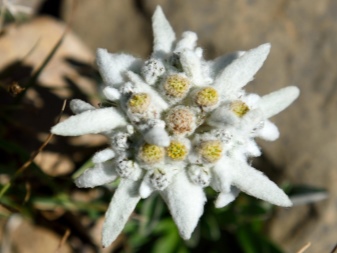
This property allows the flower to be used as a ground cover crop. The most popular varieties for cultivation are Echo, Princess of the Alps, Snow Kingdom, Zanzi. The plant is known not only for its elegant decorative appearance, but also for its beneficial properties, which is why it is used in cosmetology and medicine.
Conditions for cultivation
By its nature, the plant is completely unpretentious, but in order for it to please with lush flowering and a healthy look, it just needs to create conditions close to natural. Alpine edelweiss, when cultivated, as in the wild, prefers to grow in areas with sufficient lighting. The flower is characterized by drought resistance, besides, it is very sensitive to waterlogging of the soil and stagnant water. Light, well-drained soils are ideal for growing plants. To make the soil more similar to that on which edelweiss grows in nature, it is worth mixing the soil with leafy soil, as well as part of crushed stone or sand of a coarse fraction, when planting.

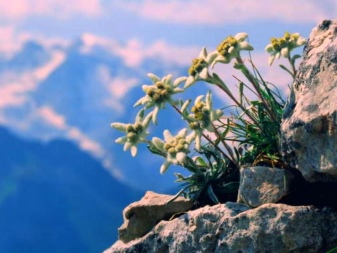

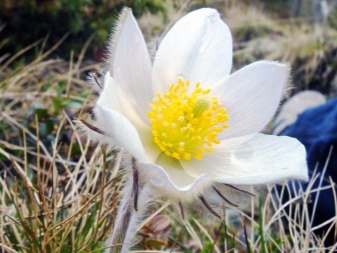
Heavy soil or too fertilized with organic matter, together with high humidity, will lead to the loss of decorativeness of the edelweiss, including its pubescence, as well as the formation of too elongated shoots. When planting a plant, it is worth considering its appearance, because in the vicinity of high crops it will not look the best. First of all, the flower will lack light, moreover, it will simply get lost. In order for the plant to attract attention, it should be planted in a small company and highlight the planting with stones.
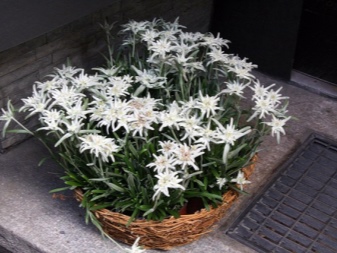

Reproduction methods
Alpine edelweiss is grown at home by cuttings, cuttings or seeds. In late spring - early summer, cuttings are cut from the tops of the shoots, for better rooting, they are dipped in a root former and planted in open soil. For the next season, the plant is capable of flowering.If there is already an adult edelweiss bush on the site, you can dilute it by dividing it. The roots of the flower are quite strong and very easily adapt to changing conditions.
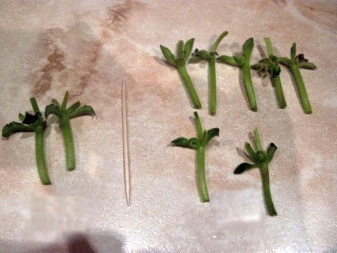
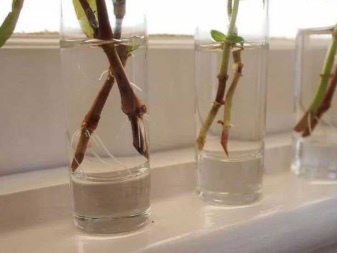
The procedure should be carried out at the beginning of autumn or somewhere in August. The new bush will bloom next year. The plant is dug up and divided into 2 or more parts with a sharp knife or pruner, with the obligatory presence of buds on each. Then they are planted in prepared holes in their places. Alpine edelweiss propagates well with the help of seeds in March, when using this method:
- last year's seeds are mixed with damp earth and kept on the bottom shelf of the refrigerator for about 20 days;
- then placed in containers with a mixture of leaf earth and sand, taken in a ratio of 2: 1;
- the container is covered with a film or glass and left in a shaded place at a temperature of + 15 ° C;
- After about 20-25 days, shoots are formed, then the shelter is removed, and the container is rearranged to the light.
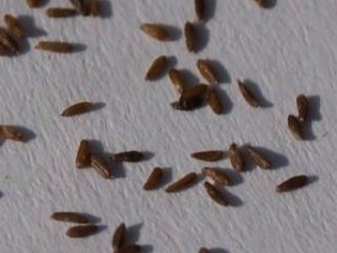

Seedlings are characterized by very lingering growth, so be patient. When they reach 2 cm in height, they are dived for growing. After the threat of frost has passed, they can be planted in the garden, keeping a distance between the bushes of 15 cm. Vegetative propagation methods make it possible to preserve all species characteristics, but with a seed plant, it may differ in appearance from its relatives in nature.
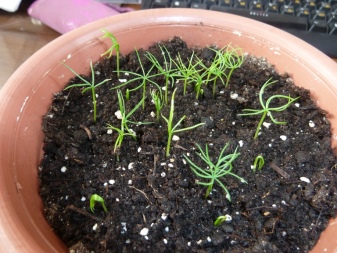
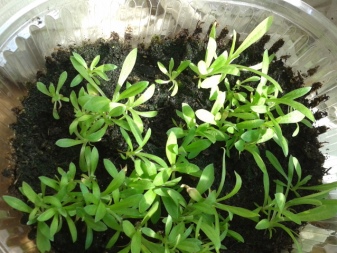
Care rules
Alpine edelweiss is distinguished by its unpretentiousness to growing conditions in nature, it is the same during cultivation. Moistening the flower needs moderate and then only in hot weather, and so natural precipitation is quite enough for it. If the summer is rainy, it is advisable to even cover the plant. Top dressing for edelweiss is not needed, since they impair the decorative appearance of the bush. It is not necessary to loosen the soil around the flower, so as not to damage the weak surface roots, but weeds must be removed without fail.
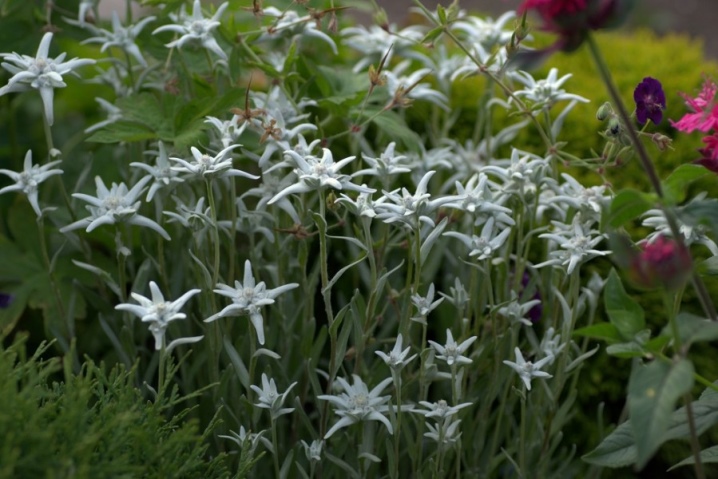
For the winter there is no need to cover the plant, it can withstand frosts well, it is quite enough to mulch the near-trunk space, but with the beginning of spring, the mulch must be removed so that the roots do not get stuck. It is also worth protecting it from pests; when they appear, insecticidal preparations are used. It is necessary to transplant a flower every 2-3 years, otherwise it will lose its decorative effect.
How to transplant correctly?
The root system of alpine edelweiss is characterized by sufficient length and branching as a result of adaptation to the conditions of rocky terrain. Therefore, when replanting a plant, it is necessary to make rather deep holes. The roots should fit well in the groove and should also be properly spread. Then they are sprinkled with dry earth and watered a little. With the appearance of new lateral shoots, one can judge the effectiveness of the transplant, as well as with the growth of the bush and flowering next year.
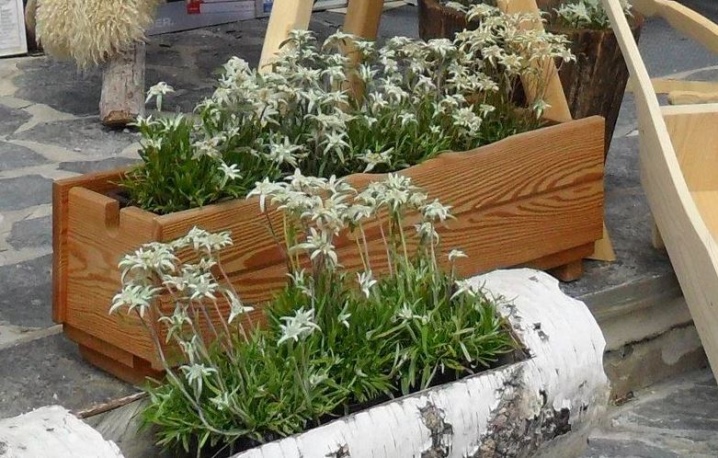
Use in landscape design
Edelweiss is ideal for landing on alpine slides, rockeries or stone gardens. Due to its squat shape, the plant is often planted in the foreground of group plantings. For a flower in the role of neighbors, ground cover crops such as sedum, alissum or tenacious fit harmoniously. This flower looks beautiful against the background of low bushes. Due to its discreet appearance, edelweiss can be lost among other flowering crops, but planted in the form of single plantings on the lawn will serve as its real decoration. Alpine edelweiss inflorescences can retain their shape for a long time without changing color, therefore they are very often used as components of dry bouquets.
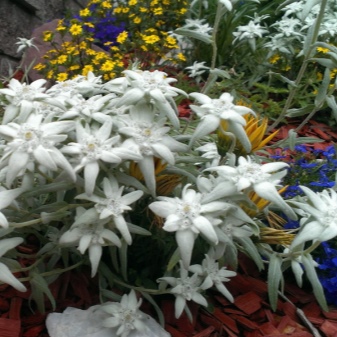
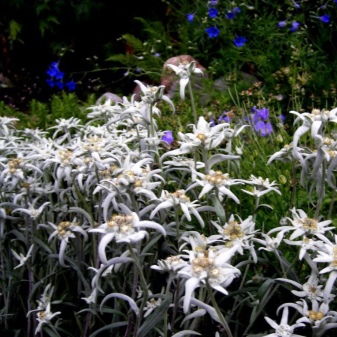
For information on how to properly care for alpine edelweiss, see the next video.







































































































The comment was sent successfully.